The world of wristwatches can be super confounding, from super long product codes to different variants and a ton of technical information. It’s very easy to brand those who love watches a watch nerd. A big part of what draws people to this complex world of watches is the watches’ complications. Today, we’ll be diving deep into these complications, so you can better understand what’s going on.
Note: Many of the watches shown in this post were sent over by Federico at delraywatch.com. This post is not sponsored.
So, whether you’re a seasoned pro in the watch game or you’re just dipping your toes in the water, hopefully, this guide will help you learn more and have a greater understanding, so when you buy a watch with complications, you know what they do. And all the while, we hope we can cast aside any confusion when it comes to complications.
If you’re a longtime reader, you already know that we made a post about watch movements a while back; you can check that out, as it’s a perfect companion to today’s guide.
Watch Movements Explained
What’s the difference between a complication and a movement? Well, quite literally, the movement is what makes your watch tick, just like the engine that drives and powers your car. And if we stick with the automotive metaphor, the complications on a watch are like your turn signals or your windshield wipers. It’s something that the watch or the car has that serves a function and a purpose. So, let’s dive deep into that.
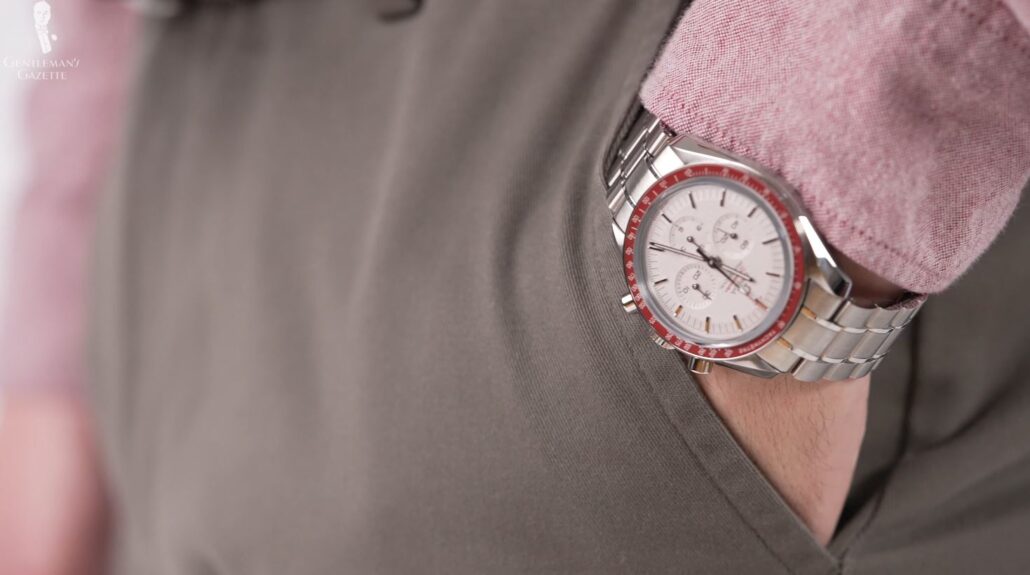
What Are Watch Complications?
Watchmaking is inherently complicated. Before human beings were able to tell the time on their wrist, time was usually displayed publicly in a town square or on a large clock. These public displays of time made sense because the clocks were run with weights and counterweights, which you couldn’t keep on your wrist or in your pocket.
This all changed in 1510 when German inventor Peter Henlein invented a system of coiled springs and gears that allowed telling time to be miniaturized. This invention is widely regarded as the birth of the watch’s mainspring, the engine that powers the watch’s mechanical heart.
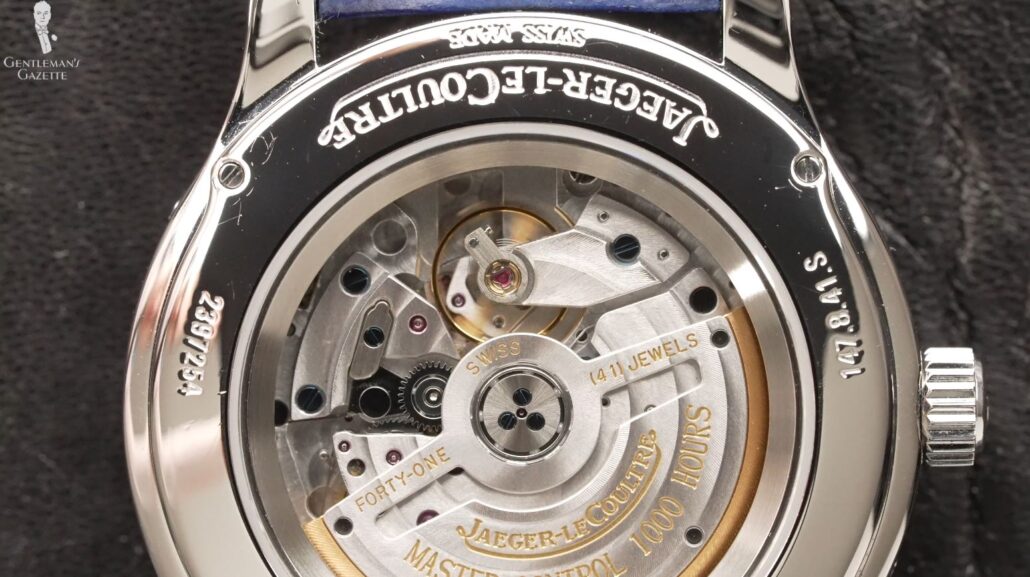
At this point in time, taking the power from that one little mainspring into the hour, minutes, and second hands of a watch would have required a ton of engineering. So, it’s funny to think that the fundamentals of a timepiece today would have been considered a complication back then. It’s still very important to mention, though, because even in watchmaking today, when new features and complications are added, they still have to work around the original movement which we can see in the past and it carries over today.
Watchmaking has come a long way since 1510, and over the years, we’ve seen a treasure trove of complications come through in various watches and pocket watches, with the crown of the most complicated watch going to the Vacheron Constantin 57260, which has a staggering 57 complications. And by the size of it, it probably isn’t all that user-friendly. Without a doubt, this is an incredible display of watchmaking skill, but you have to ask yourself, do you really need that many complications… or does it make life more complicated?
![Vc Watch The Vacheron Constantin 57260 watch [Image Credit: Hodinkee]](https://www.gentlemansgazette.com/wp-content/uploads/2022/07/VC-watch-1030x580.jpg)
Granted, this Vacheron Constantin is not designed to be an everyday piece, so let’s look at some complications that you will use and should know.
Complication #1: Date
First up is sort of the most universally recognized complication, which is the date. This type of complication takes on many different forms and configurations.
- The date window is a particularly famous feature on Rolex watches, highlighted by the magnifying lens set into the crystal.
- The day-date display is the next evolution, which, as the name suggests, gives you both the day of the week as well as the date.


- You can also find pointer date watches, where a pointer hand highlights the date according to markers around the dial.
- A subdial date would be a similar version of a pointer date watch and can even be used in this configuration to show the month of the year.
- Calendar complications, which are essentially date complications that showcase a greater level of calendar detail, such as the day, date, month, and even the year.
![Pointer Date A pointer date on an Oris watch [Image Credit: Oris]](https://www.gentlemansgazette.com/wp-content/uploads/2022/07/pointer-date-1030x579.jpg)
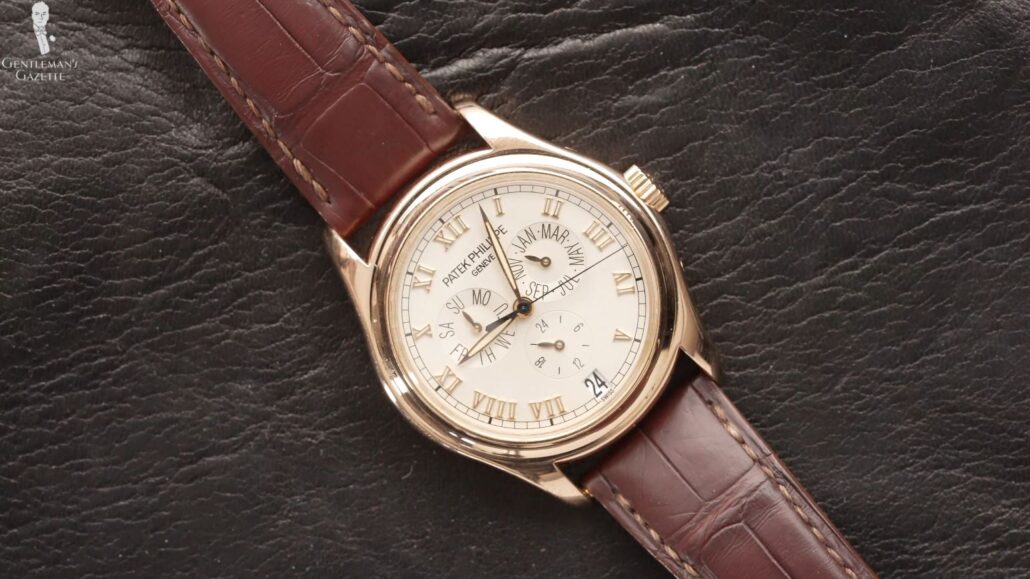
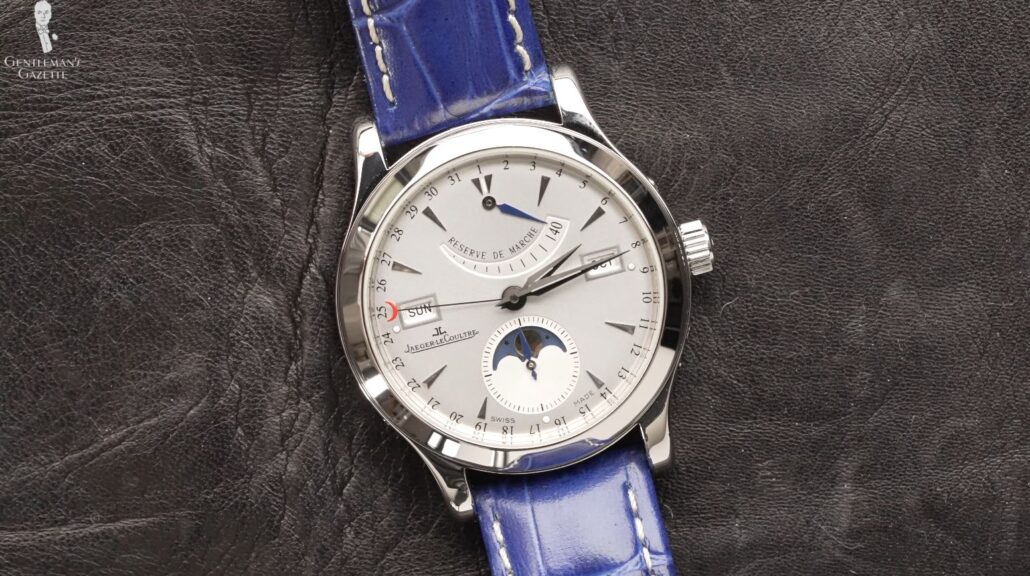
So, however it’s displayed, I’m sure you’ve seen a date complication before. After all, they’re not exclusive to luxury watches. You can find them even in this little Casio here. Having the date visible on your watch can be a huge benefit. Whether it’s for filling out the date on a check, or making sure you’re taking your right medication, it’s really useful.
Yes, we have this information more readily than ever before; simply unlock your phone, and you have access to the day and date. This is, of course, the age of smart technology and there’s no denying that there’s a reduced need for a watch now, but if you wear one, it’s because you want to wear it. Plus, you’ll also be covered when your tech inevitably runs out of battery.
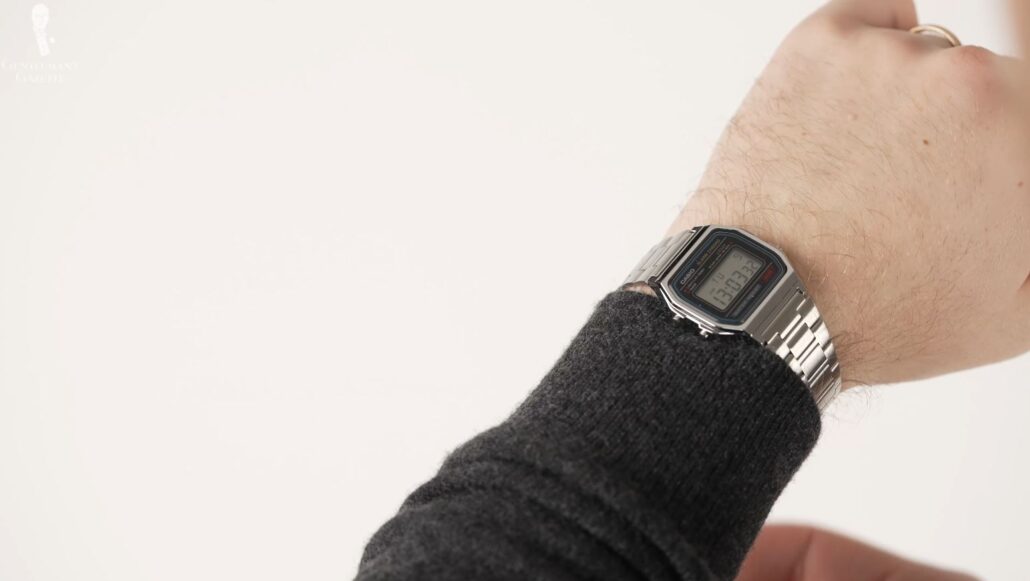
In my experience, it’s much easier to have the date readily available on your wrist than to dig through your pocket for your phone. Also, that could be the reason why the pocket watch fell out of favor.
Keep in mind that although date complications are very useful, having that design can sometimes make the watch less dressy, but not in all occasions. There’s some really nice date windows out there. The key is to look for a date complication that isn’t too flashy, loud, or takes up too much of the dial. So, maybe, leave those day-date complications for more casual watches.
Complication #2: Dual Time Zones
Our next complication is the dual time zone. This is characterized by a second hour-pointer. It sets apart the current time and a second time zone. What’s commonly known as a GMT watch is a dual time complication. GMT stands for Greenwich Mean Time, after the time zone itself. And there is some variation in dual time watches.
You can find dual-time complication watches that are powered by the same movement. The world time zone complication has 24 time zones of the world’s major cities on an internal rotating bezel, and there’s a variation of the GMT complication with either fixed or independent hour pointers.
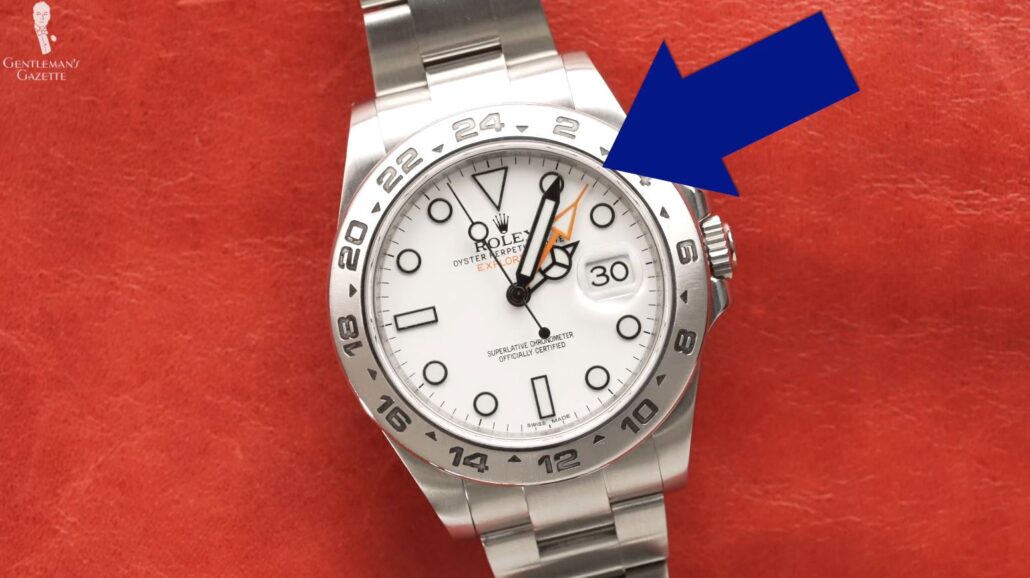
So, what’s the dual time zone for? This type of complication really lends itself to those traveling constantly and who are jet set flying around the country and the world, whether for leisure or business. Or it’s useful for business people who do business overseas, while based in their own home country. So, if you’re anything like Raphael and me, who have vendors overseas that we work with daily, this is a really useful complication.
The Travel Watch Guide
One thing to keep in mind about dual time zone watches is that they can be very hard to dress up, especially if they have a rotating bezel. After all, the reason behind this complication is entirely practical. And even if you avoid the more sporty GMTs, just keep in mind that the dressy version still can look pretty complicated on the dial, so it’s not a true and perfect classic dress watch.
Complication #3: Chronograph
Next is a titan of sports watch complications, the chronograph. It is most firmly focused on measuring time. The multiple subsidiary dials of a chronograph are there to measure elapsed time with great accuracy. For this reason, there are many famous iterations of chronograph watches.
TAG Heuer has both the Monaco and Carrera chronograph watches in their collection, with international style icon Steve McQueen showcasing the Monaco in the film Le Mans. The Rolex Daytona boasts a long wait time for purchase, as well as an impressive six-figure plus price point at auction; probably something to do with being known as the Paul Newman watch. And, of course, there’s the Omega Speedmaster, perhaps the most iconic chronograph in history, in my book.
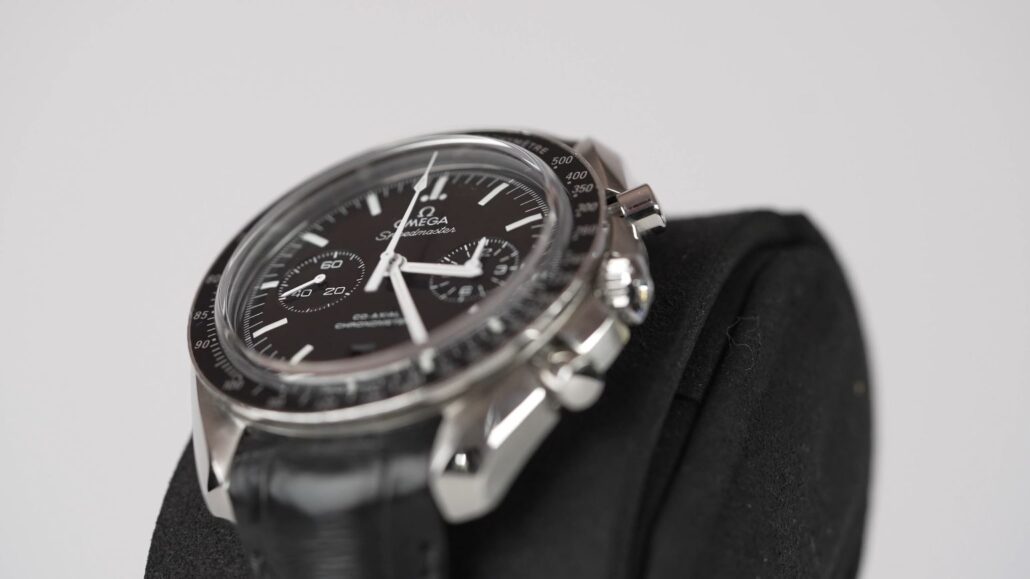
Much like there isn’t one set way to display a date window, there are different ways to display a chronograph on a timepiece. But it’s safe to say you’re likely to find two or three sub-dials. These sub-dials can measure a variety of different units of time.
Chronograph watches can also feature other complications, such as a date window or a dual time zone, and these, all together, make them a very practical watch.
Another feature commonly seen on a chronograph is a tachymeter scale. This measures units usually in miles per hour or kilometers per hour, and it can be found on the inner or outer bezel of the watch. On the Omega Speedmaster, it’s on the outer bezel, as the Speedmaster originally started off as a racing watch. So, having a watch that would time miles per hour makes perfect sense.
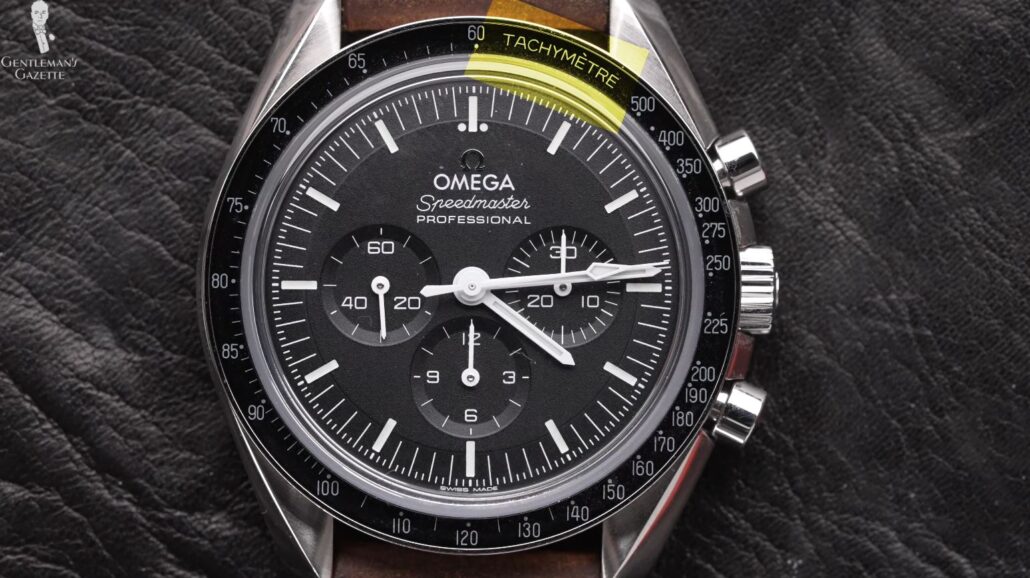
Due to their functional nature, they work really well as sports watches, although if you look at some really elegant references from Patek Philippe or Jaeger-LeCoultre, they can work really well as dress watches. Just keep in mind, as we’ve said many times before, if you add a chronograph to a dress watch, it can make the dial look more complicated and a little bit less elegant.
Overall, a chronograph is a great complication to have on a sports watch or a dressier watch. So, I would highly recommend you add one to your collection.
Chronograph – Watch Complications Explained
Complication #4: Moonphase
Perhaps, the most aesthetically pleasing complication out of all of them is the moon phase. This complication was originally used by sailors to track the changes in the ocean’s tides, but essentially, a moon phase complication shows the various cycles of the moon’s path.
For as long as mankind has tracked time, we’ve always needed something to track it against. And it’s pretty incredible to think that despite all the technology that governs our day, our day really starts and ends with the sun and the moon. So, it’s safe to say that timekeeping and the moon have been linked since the very beginning, which is why it feels pretty natural to see this complication on a wristwatch.
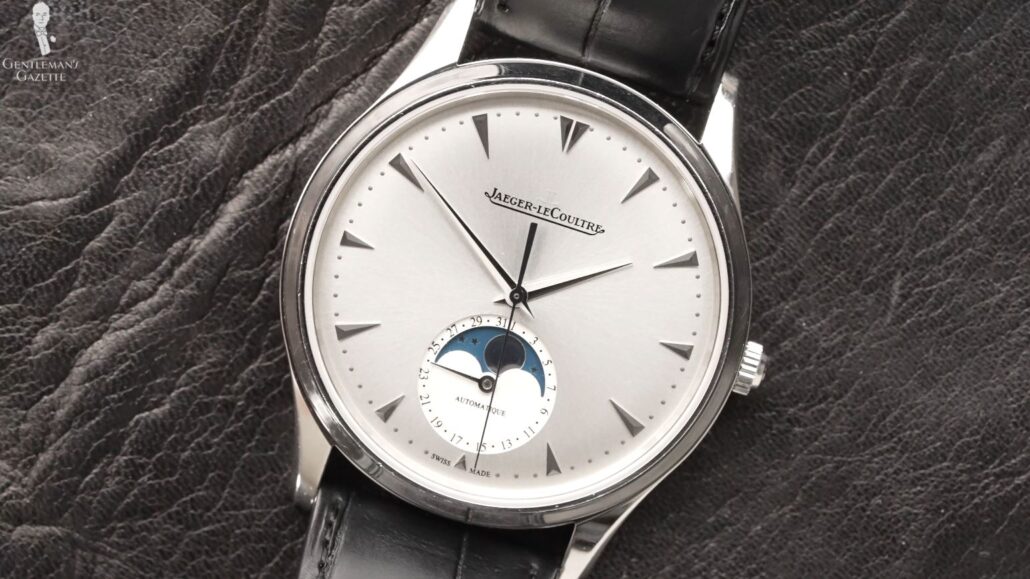
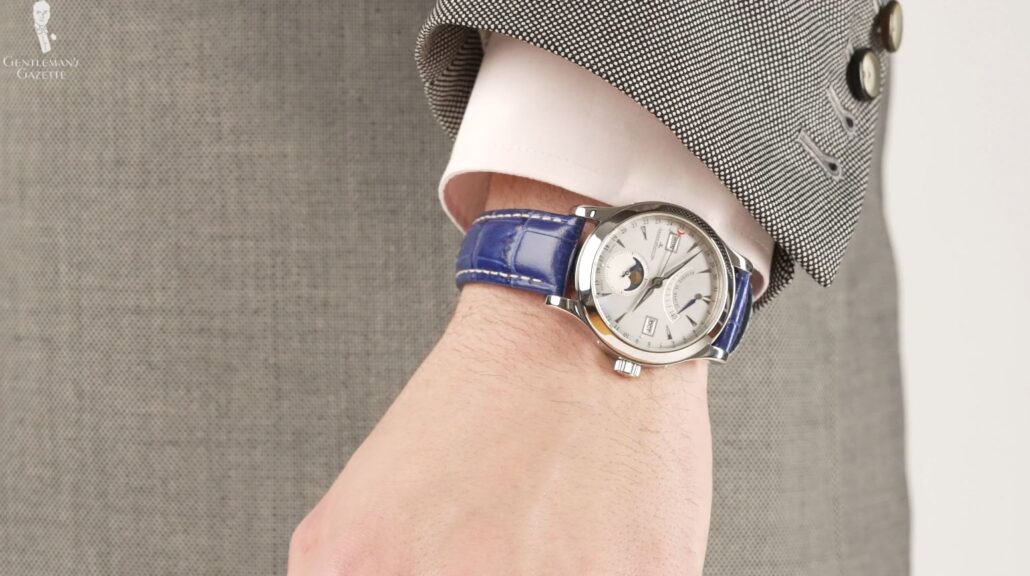
Many of us might see this complication as useless or don’t feel the need, but having a moon phase complication sets you apart in an increasingly casual world. It’s also equally rare to see a moon phase by itself. Usually, they’re accompanied by a host of other complications, typically displayed along a dual time zone, a chronograph, or a sub-second. This does mean that moon phase complications tend to be on the pricier side of things. After all, adding more complications is more work that the watchmaker has to do, which increases his time and the cost.
If you invest in elegant design and craftsmanship and appreciate the moon phase complication, it’s safe to say you have friends here at the Gentleman’s Gazette.
Bonus Complication: Tourbillon
Finally, today, we come to our bonus complication, which is the tourbillon. As I’ve previously mentioned, watches are made up of hundreds of tiny mechanical parts. And for most of watchmaking history, watches have some sort of accuracy tolerance; things like how the watch is positioned can affect its accuracy, as gravity will play an effect on the small gears and cogs inside.
For some context, the development of the tourbillon watch began in 1795. And the first tourbillon was patented by Abraham Louis Breguet in 1801. This was the age of pocket watches, so they were either stored upright or laid on a flat surface. What the tourbillon does is take those regulating components, including the balance, balance spring, and escapement, and houses them in a cage. This cage has the ability to rotate separately from the movement. Therefore, gravity is affecting the cage and not the components inside.
![Ap Watch A close-up of the tourbillon in an Audemars Piguet watch [Image Credit: Audemars Piguet]](https://www.gentlemansgazette.com/wp-content/uploads/2022/07/AP-watch-1030x574.jpg)
There’s a lot of heated debate in the watch community about the tourbillon and whether or not it does a great deal affecting the watch’s accuracy. And to complicate things further, there’s debate about whether or not it should be classified as a complication. And because it doesn’t really add anything functional to the dial, we added this as our bonus item.
Regardless, the tourbillon is not a common sight in watchmaking as it takes an incredible amount of time and detail to construct. For this reason, a watch with a tourbillon is typically expensive, which is why you’ll see it displayed as part of the watch’s design.
So, while owning a watch with the tourbillon complication is for the serious connoisseur, all the rest of us can watch and marvel over the watchmaking and mechanical expertise.
Conclusion
At the end of the day, whether your watch has several complications or none, just know that there’s a sheer variety out there, and there is definitely a complication for you. See, that wasn’t so complicated!
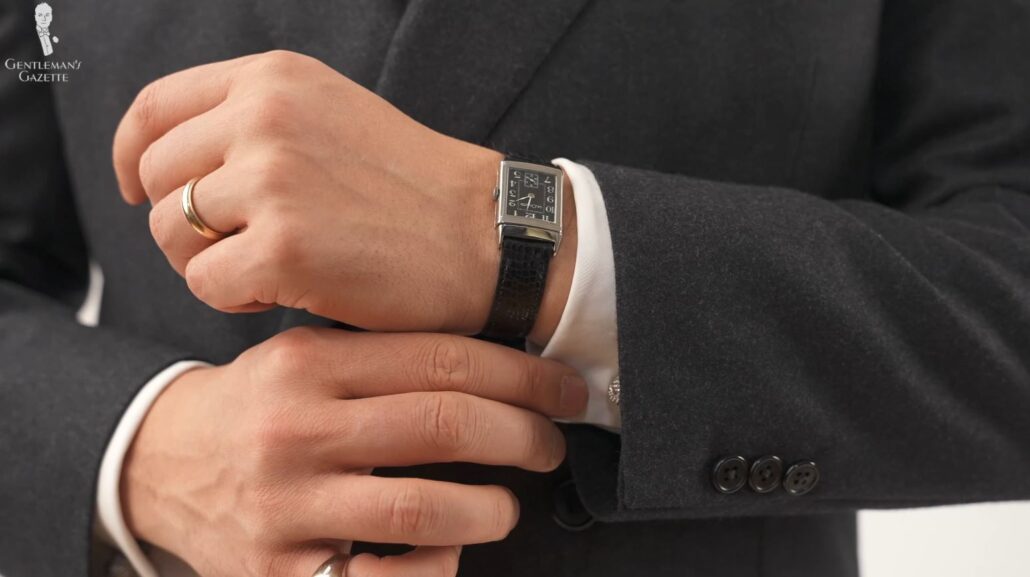
What’s your favorite watch complication and why? Share your thoughts in the comments!
Outfit Rundown
Today, I’m wearing a rather casual outfit. My family just moved houses and this is what I found in a box, so this is what I wore. It’s sort of my last-ditch effort to get some of my fall-winter pieces in, as it’s starting to heat up here in Minneapolis. I’m wearing a brown tweed overshirt from Spier and Mackay, a simple gray T-shirt, dark blue denim jeans, and a pair of brown or earth tone sneakers from SuitSupply that tie in with the brown of the overshirt.
I’m also wearing a pair of Fort Belvedere socks in this gray color because they’re dark and it matches well with my jeans. Check out the Fort Belvedere shop for more socks and other men’s accessories.


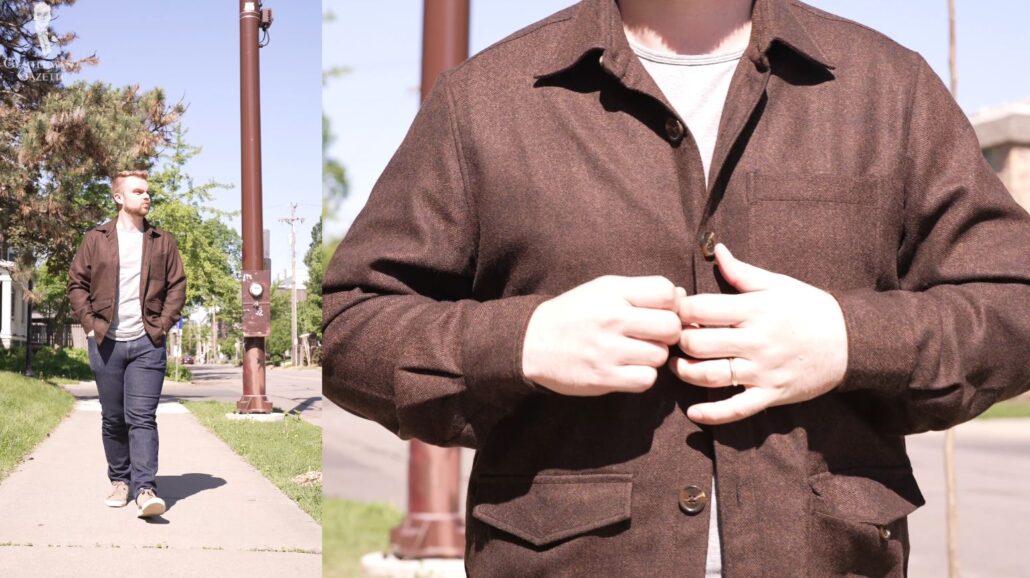
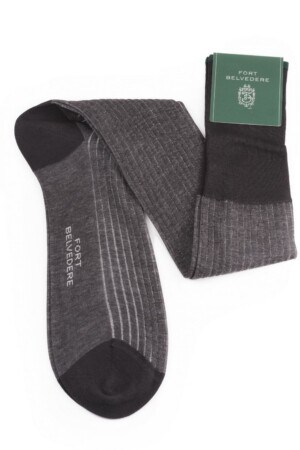
Great article, Nathan! Re tourbillons, the point isn’t so much that gravity affects the cage, or that the cage has the ability to rotate separately from the movement. A pocket watch sitting vertically in its owner’s vest pocket experiences the force of gravity in just one direction all day long (except when taken out to read the time). This unidirectional pull of gravity on the poise of the movement’s escapement causes time-keeping errors. By rotating the escapement in the vector of gravity once per minute, the tourbillon averages out the gravitational effect, minimising these errors. A watch laid on a flat surface—i.e., with its escapement perpendicular to the pull of gravity—doesn’t have the same problem as a vertically oriented watch and thus doesn’t need a tourbillon. Tourbillons are also of questionable practical benefit in wristwatches, which don’t sit in just one orientation all day long like pocket watches … but they’re beautiful and so fascinating to watch!
Thanks for your comment, Mark! Indeed, we scratched our head about whether we should include it in the list, which is why we added it as a bonus item – Tourbillons are complicated in more ways than one, haha!
My two 70’s mechanical Timex wristwatches are my favorite. Next to that are my pocket watches. There’s just something about a pocket watch that makes people take notice. I don’t invest a lot in timepieces as you can see.
The article is a great read for people who find watches interesting or just to learn something new. As for myself as long as the watch tells the correct time 99% of the time that’s all I care about. Wheater it’s a $50,000 watch or a $100 or something else as long as it stays running and keeps time and you like it wear it, and forget what’s inside, but that’s just me.
Glad you enjoyed it, Richard! You’re right; everyone who appreciates wristwatches will get a different level of enjoyment out of them. Personally, I’m a big fan of vintage watches around $100-200. My enjoyment comes from the unique character, as well as the better sizing for my smaller wrists.
There seems to be some confusion here. Tourbillon is a soup and one should not put tourbillon, nor any other form of soup, in a watch. You will no doubt recall the difficulties which the Mad Hatter faced after the March Hare had put butter in his watch. Soup causes even greater problems.
Very informative video. I always thought complicated watches were the ones that were chronograph complication with all dials within the watch.
I used to wear my insured Day/ Date into Manhattan but since all constant shootings and stabbings I keep it at home along with my wallet when I go into the city.